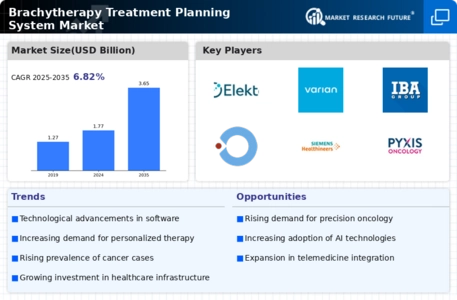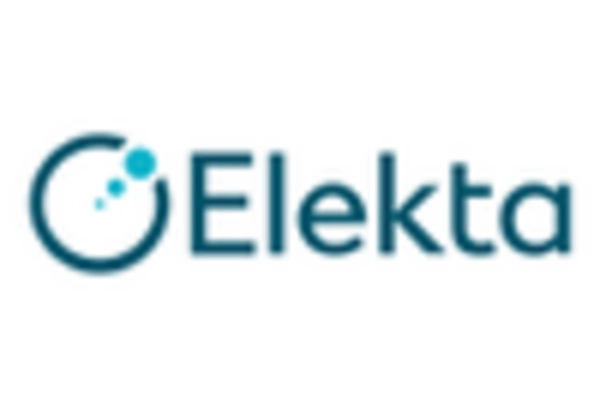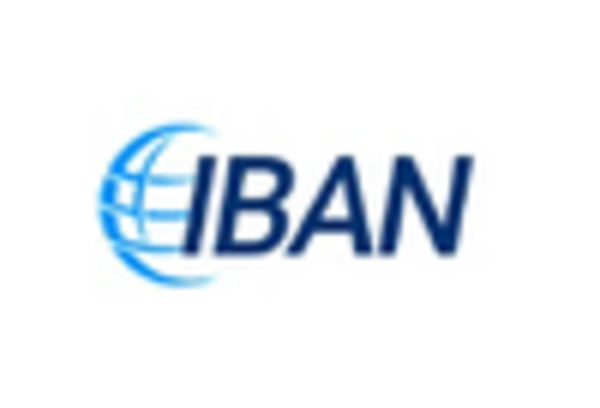Increasing Cancer Incidence Rates
The rising incidence of cancer globally is a primary driver for the Brachytherapy Treatment Planning System Market. With cancer cases expected to increase significantly, the need for effective treatment modalities becomes paramount. Brachytherapy, known for its targeted approach, is gaining traction as a preferred treatment option for various cancers, including prostate and breast cancer. Market data indicates that the number of brachytherapy procedures has increased by approximately 15% over the past few years, reflecting a growing acceptance among oncologists. This trend suggests a robust demand for advanced treatment planning systems to support these procedures.
Technological Advancements in Brachytherapy
The Brachytherapy Treatment Planning System Market is experiencing a surge in technological advancements that enhance treatment precision and patient outcomes. Innovations such as real-time imaging and advanced dosimetry algorithms are becoming increasingly prevalent. These technologies allow for more accurate placement of radioactive sources, which is crucial for effective treatment. According to recent data, the integration of artificial intelligence in treatment planning is projected to improve efficiency by up to 30%. As healthcare providers seek to adopt these cutting-edge technologies, the demand for sophisticated treatment planning systems is likely to rise, driving market growth.
Regulatory Support and Reimbursement Policies
Supportive regulatory frameworks and favorable reimbursement policies are crucial for the Brachytherapy Treatment Planning System Market. Governments and health organizations are increasingly recognizing the efficacy of brachytherapy, leading to improved reimbursement rates for these procedures. This regulatory backing encourages healthcare facilities to invest in advanced treatment planning systems, as they can expect better financial returns. Recent reports indicate that reimbursement for brachytherapy procedures has improved, with some regions reporting increases of up to 20%. Such financial incentives are likely to stimulate market growth and encourage the adoption of innovative treatment planning technologies.
Rising Awareness and Education on Brachytherapy
There is a notable increase in awareness and education regarding brachytherapy, which is positively impacting the Brachytherapy Treatment Planning System Market. As more healthcare professionals and patients become informed about the benefits of brachytherapy, the demand for effective treatment planning systems is likely to grow. Educational initiatives and professional training programs are being implemented to enhance understanding of brachytherapy techniques and technologies. Recent surveys indicate that awareness campaigns have led to a 30% increase in patient inquiries about brachytherapy options. This heightened awareness is expected to drive market expansion as more facilities seek to adopt advanced treatment planning systems.
Growing Demand for Minimally Invasive Procedures
The trend towards minimally invasive procedures is significantly influencing the Brachytherapy Treatment Planning System Market. Patients and healthcare providers alike are increasingly favoring treatments that minimize recovery time and reduce complications. Brachytherapy, being a minimally invasive option, aligns well with this demand. Market analysis shows that the preference for minimally invasive cancer treatments has led to a 25% increase in brachytherapy utilization over the last few years. This shift not only enhances patient satisfaction but also drives the need for advanced treatment planning systems that can optimize these procedures.


















Leave a Comment